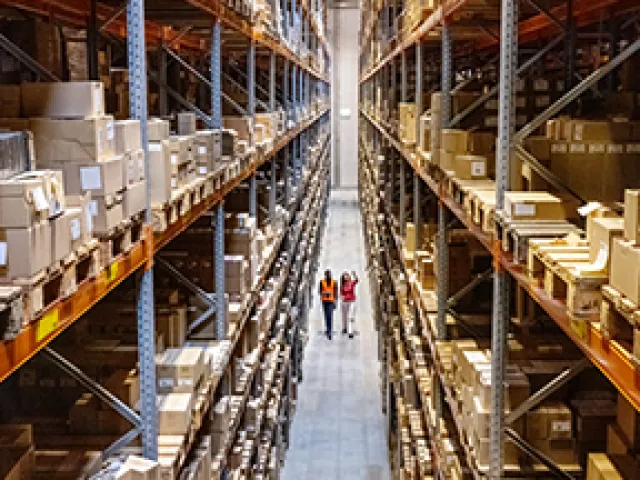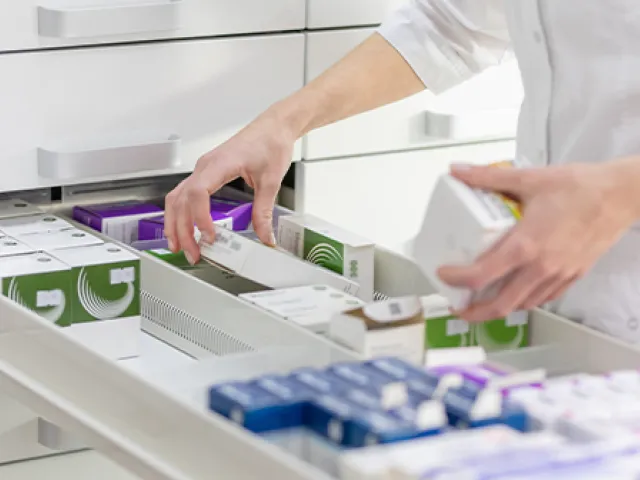Table of contents

Facing mounting complexity and supply security risks, procurement leaders like Andrey Zaikin, Head of Sourcing at Zentiva, are exploring supply chain digitalization to reshape supplier relationships and ensure supply security. By moving toward real-time data sharing, Zentiva aims to foster transparency and create a "win-win" dynamic with suppliers that will enhance operations and build resilience.
Discover how digitalizing supply chain collaboration can help life sciences companies and their partners tackle critical challenges—and how TraceLink MINT can accelerate this journey. Watch the video to learn more.
Video Highlights:
- 00:18 - What are the top issues that put pressure on material sourcing and procurement operations?
- 02:21 - How do you envision the next phase of digital transformation unfolding within the pharmaceutical supply chain?
- 03:30 - How will your suppliers benefit from real-time integration and data exchange with your organization?
- 05:41 - Which KPIs will supply chain digitalization impact the most?
- 07:48 - How will supply chain digitalization help Zentiva navigate geopolitical challenges in Europe and worldwide?
TRANSCRIPT
TRANSCRIPT
My name is Andrey Zaikin and I'm responsible for the sourcing and product supply strategy at Zentiva.
I think I would focus on three main topics that today bothers everybody in our industry. The first is complexity. Complexity is quite a strong and difficult topic that is important for everybody.
We face a lot of complexity due to the growing generic business overall. But also because we face more and more standalone smaller products, which require specific capabilities, which actually requires additional resources and complexity in terms of our supply chain. Number two is supply security.
In terms of supply security, we are today, and the last three years, facing quite strong difficulties due to the geopolitical issues, due to the situation overall with supply from Asia. We understand that this will not stop today. We need to get ready for how to manage and how to deal with the supply security.
The third point is how we as a procurement organization in Zentiva, or how supply chain leaders today are able to combine, actually, not only focus on pure pricing, but how we combine this complexity and supply chain disturbances in one organization and a way of working.
Actually cultural change, which also requires a lot of focus on digitalization, on changing our ways of working with our suppliers, and to switch more to partnership rather than supply and producer relationships.
So, I think the biggest topic today, in terms of digitalization across the pharmaceutical industry today, is how do we make the change managed well across the industry?
So, we all understand that the change is needed. But the how is actually still a question mark. We are all in the same situation that we realized that we need to do the change. And now we need to go to the next step. I would say companies like TraceLink are helping a lot in this understanding and helping a lot with clarifying the opportunity, the way we can go.
I think we need to convince ourselves and make the right choices in the future as to how digitalization will help us and build, at the end, the right business case and right way of working that will consider the next years of supply and complexity that we face today. We have more than 400 suppliers today in our network on materials, on APIs, excipients, and packaging.
And I think also our suppliers, which we call them more partners now, rather than suppliers, because our success gives them growth opportunities to further expand their presence and work with us more. And we are quite an attractive customer for them.
So, it brings a kind of win-win situation to both us and our partners if we really create a strong connection. I would see digitalization and the whole communication that we have as one of the tools to enhance our communication levels and supply relationship management.
For both us and our suppliers, it creates a lot of opportunities rather than hurdles because we can spend more valuable time on solving our problems on delivering the materials and goods to our patients rather than checking who is wrong and who is right in terms of data and data exchange. There are many KPIs that we already take today as measurements of performance of our suppliers.
But then the lack of transparency and communication actually makes it more difficult to ensure that those KPIs are really confirmed and managed by both parties because it is not enough that I will apply some KPIs on my supplier. They need also to ensure that they understand them and are working according to those KPIs.
Right? So, it's important that we are sharing the same information and measuring the same things together because it's also in their interest to reach a certain level of performance, to allow me to give them more volumes, more activities, more business in the end.
There are several KPIs: OTIF (on time, in full), there are KPIs in terms of quality and in terms of performance and pricing also, in the level of delivering the products, how many products they have in our scope, how many POs they are sending, how many POs they acknowledge on time. Are there some POs that are postponed continuously? So, there are many kinds of KPIs that we take into consideration.
So, I think TraceLink gives quite a good opportunity for all the companies involved in the process of serialization and track and trace as a base platform for everybody to communicate on the same level in the end. And then it's up to us how we develop this kind of communication and relationship as a business.
But overall, it's quite an interesting broad platform that through some regulations created an opportunity, actually, for everybody to communicate in the same language and communicate on the same platform. And then to use this to grow on to the next level of communication through the MINT platform or through other opportunities. It's kind of, I would say, an obvious next step.
And then we all, as those who work in the supply chain and procurement and all the activities related to the communication with the suppliers, we all learn at the end to speak the same language. Right? So, I think it's basic, and in the past, maybe it was nice to have, for me, now it's really becoming a must to use digitalization and the platforms like MINT, TraceLink, and so on, to go to the next level.
For sure, all the manufacturers today, and we are one of the strongest, let's say, companies in the European network of manufacturing. We have sites in Europe, we have sites in India and we work with the manufacturers or suppliers across the globe. So, we get a supply from China, we get a supply from India, we get a supply from Europe.
In the end, the consolidation of the information and consolidation of the data helps all of us to understand how we can reduce complexity. Right? Because at the end, through consolidation of the information, we can build the right projects for contingency. We can work more on the dual sourcing and ensuring that our supply security is much stronger.
So, we already see requirements from many countries in Europe like France and Germany now, all focusing a lot on supply security, ensuring that we are able to bring medicines to all our patients on time following the Covid, following the other geopolitical topics today. So, manufacturers and suppliers are understanding that the supply security is not just something that's happening by itself, but it requires specific attention.
So, all the CPOs of all the companies today have a KPI, not only on price, but also on supply security. So, we need to ensure that this is happening. And without this communication
with suppliers, it will not happen.








